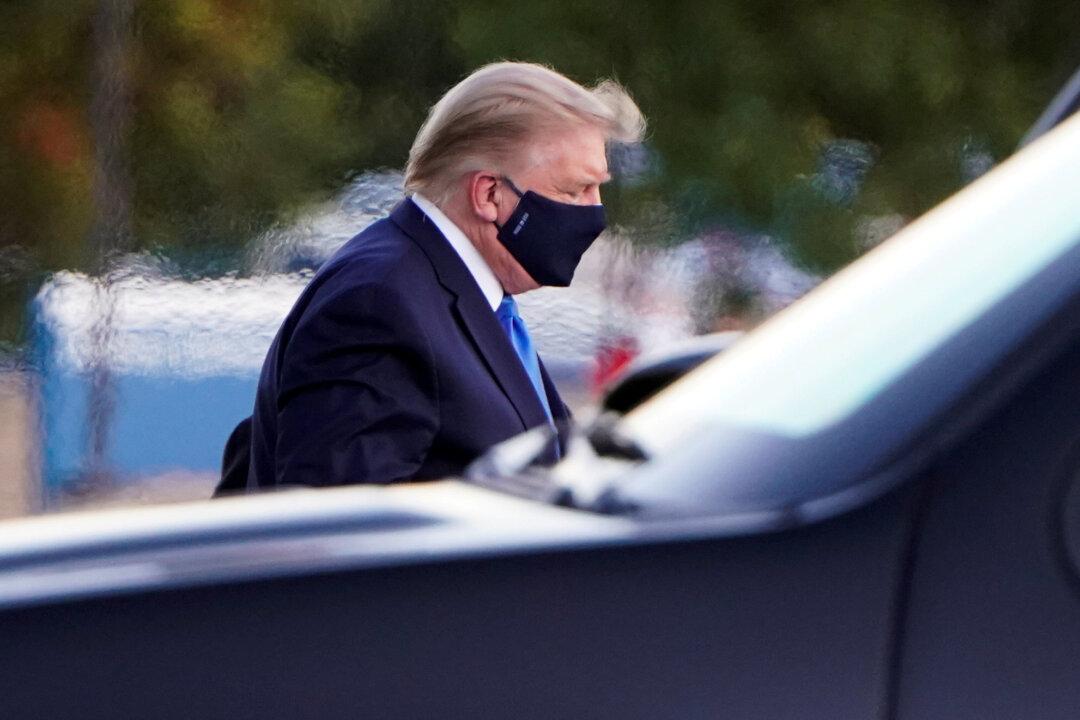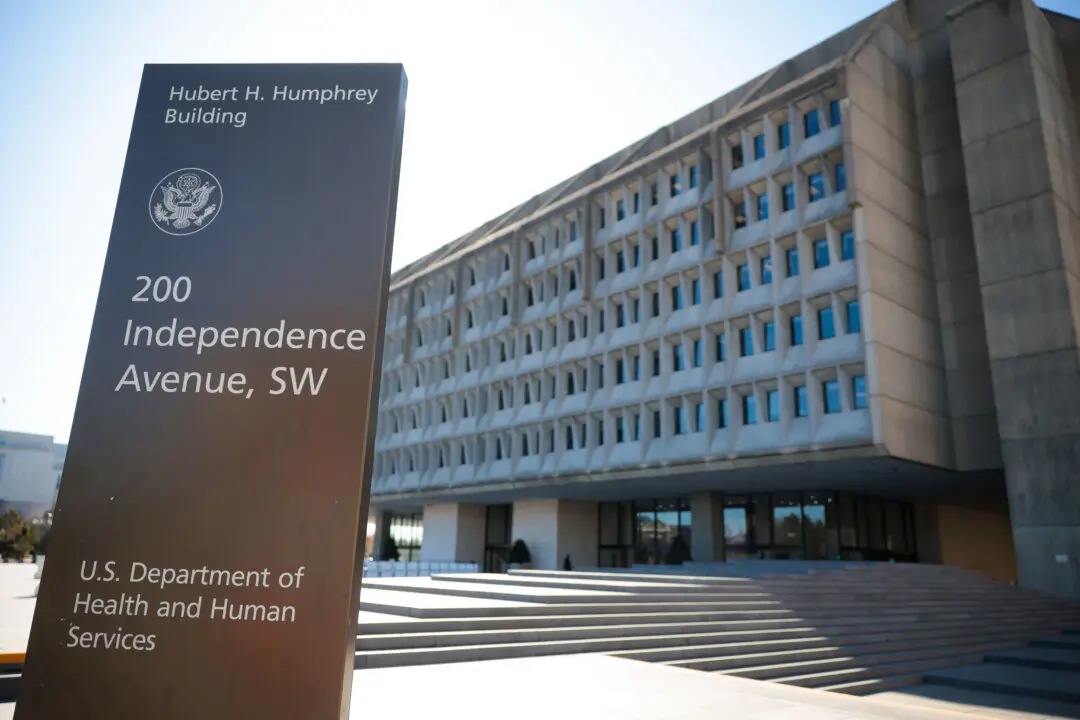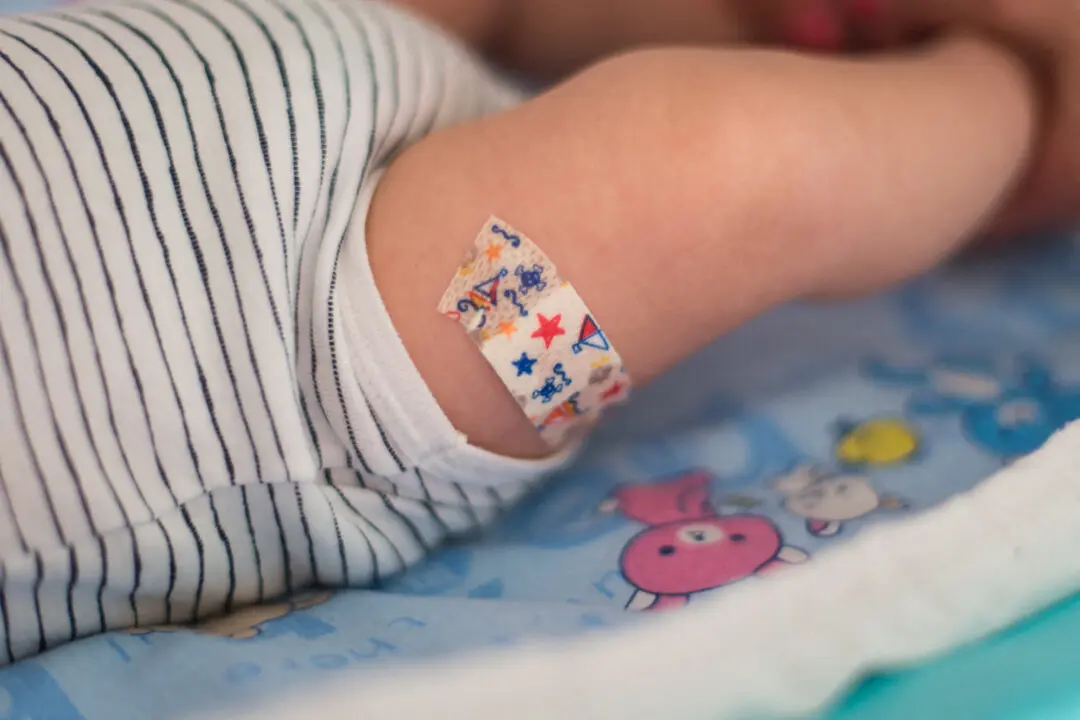President Donald Trump has been fever-free around 24 hours and is in good spirits as he battles COVID-19, doctors said on Saturday.
“This morning, the president is doing very well,” Dr. Sean Conley, the president’s physician, said at Walter Reed National Military Medical Center in Maryland on Saturday.





